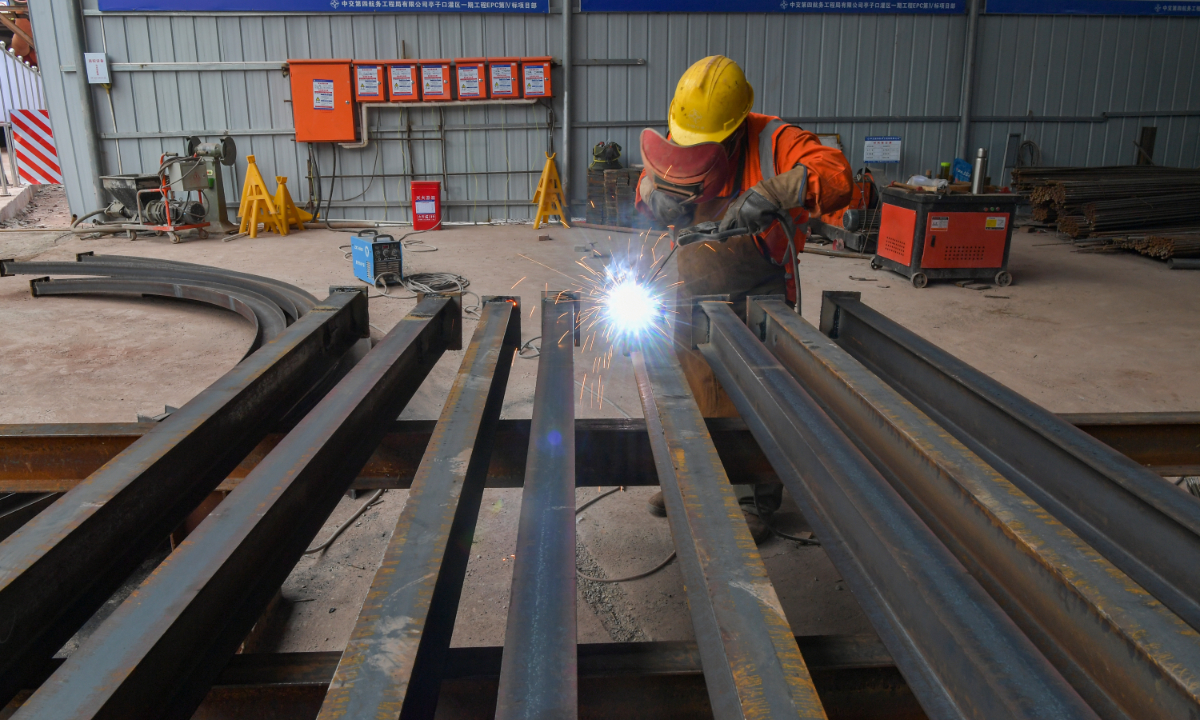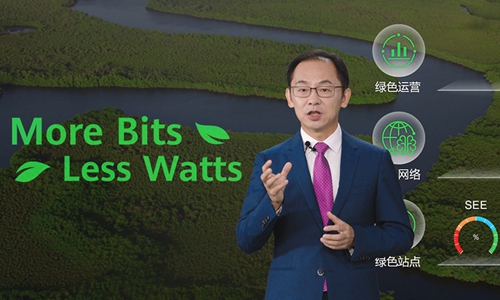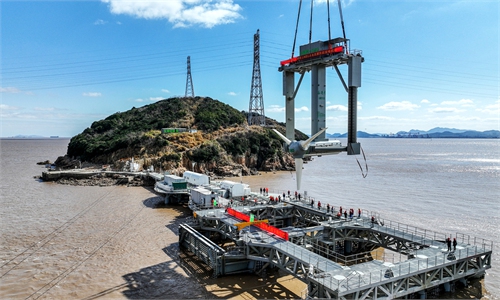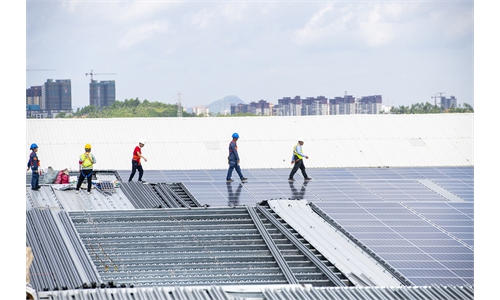China issues regulations for construction-material industry, targeting sector's emissions peak by 2030

Construction material Photo: VCG
China's Ministry of Industry and Information Technology and other three top regulators issued a document outlining regulation for carbon emissions in the construction-material sector, a further step targeting an industry wide carbon emissions peak by 2030.
The outline stated that during the 14th Five-Year Plan period 2021-25, the current structure of the construction-material industry should be adjusted to reduce the energy costs and carbon emission in producing major materials including cement, glass and ceramics. The comprehensive energy cost will be reduced by over three precent in cement clinker production units as part of the guidelines.
During the 15th Five-Year Plan period 2026-30, key low carbon emissions technologies should be introduced to assist the industry, while the replacement rate for fossil fuels should be raised, and a clean ecosystem should be formed, in order to ensure peak emissions by 2030.
Currently, carbon emission volume of cement production accounts for about 70 percent of overall carbon emission volume for the industry, thus the production volume of cement along with other major materials will be limited by supply-side reform, based on the outline.
Carbonate minerals which generate CO2, is a major raw material for making cement and lime, and account for over 50 percent of carbon emission in the industry during the production phase. The outline highlighted the need to replace the carbonate minerals with environment-friendly raw materials and enhance treatment and disposal methods.
Currently, fossil fuels generate over 30 percent of carbon emissions across the construction-material industry. The outline appealed to industry players to utilize clean energy including electricity and natural gas, and increase the replacement rate for coal.
In addition, the outline stressed the need to accelerate the technological innovation, which includes new types of material, new production approaches and production digitalization.
Global Times



